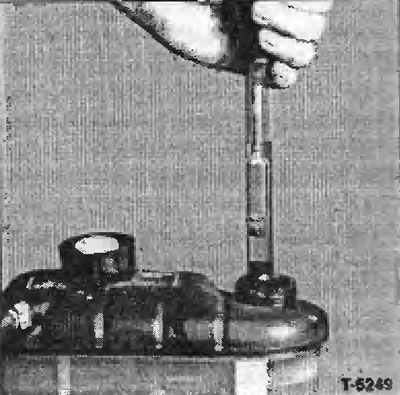- Densimeter (to determine the concentration of antifreeze), which is inexpensively available in shops selling accessories for motor sports, and is also often offered for use at gas stations.
For safety reasons, the concentration of antifreeze in the coolant of the cooling system must be checked regularly before the onset of winter, especially if intermediate replenishments of the system with clean water have taken place.
Warm up the engine until the radiator at the top feels warm to the touch.
Open expansion tank cap carefully.
Attention: Do not open the cover when the engine is hot, see chapter "Checking the coolant level".

Suck in the coolant with a densimeter and determine its density by the position of the float (the scale of the densimeter is graduated in°C, and the measured value indicates the temperature above which the coolant will not freeze). In our latitudes, the concentration of antifreeze should prevent freezing of the coolant, at least to a temperature of -35°C, which corresponds to the ratio of antifreeze and water volumes of 1:1.
Addition of BMW antifreeze
Attention: Since the radiator and heat exchanger are made of aluminium, only suitable antifreeze approved by BMW should be used.
Example: A measurement of the antifreeze concentration in the cooling system of a 530d automobile showed that the coolant is guaranteed from freezing down to -10°C. In this case, 3.4 liters of coolant must be drained from the cooling system and 3.4 liters of pure antifreeze must be poured into the system. This ensures that the coolant is protected from freezing down to -35°C.

Attention: The table shows the values of the volumes for a coolant temperature of approximately +20°C.
Close the cap on the expansion tank and, after a test drive, recheck the concentration of antifreeze in the coolant.
